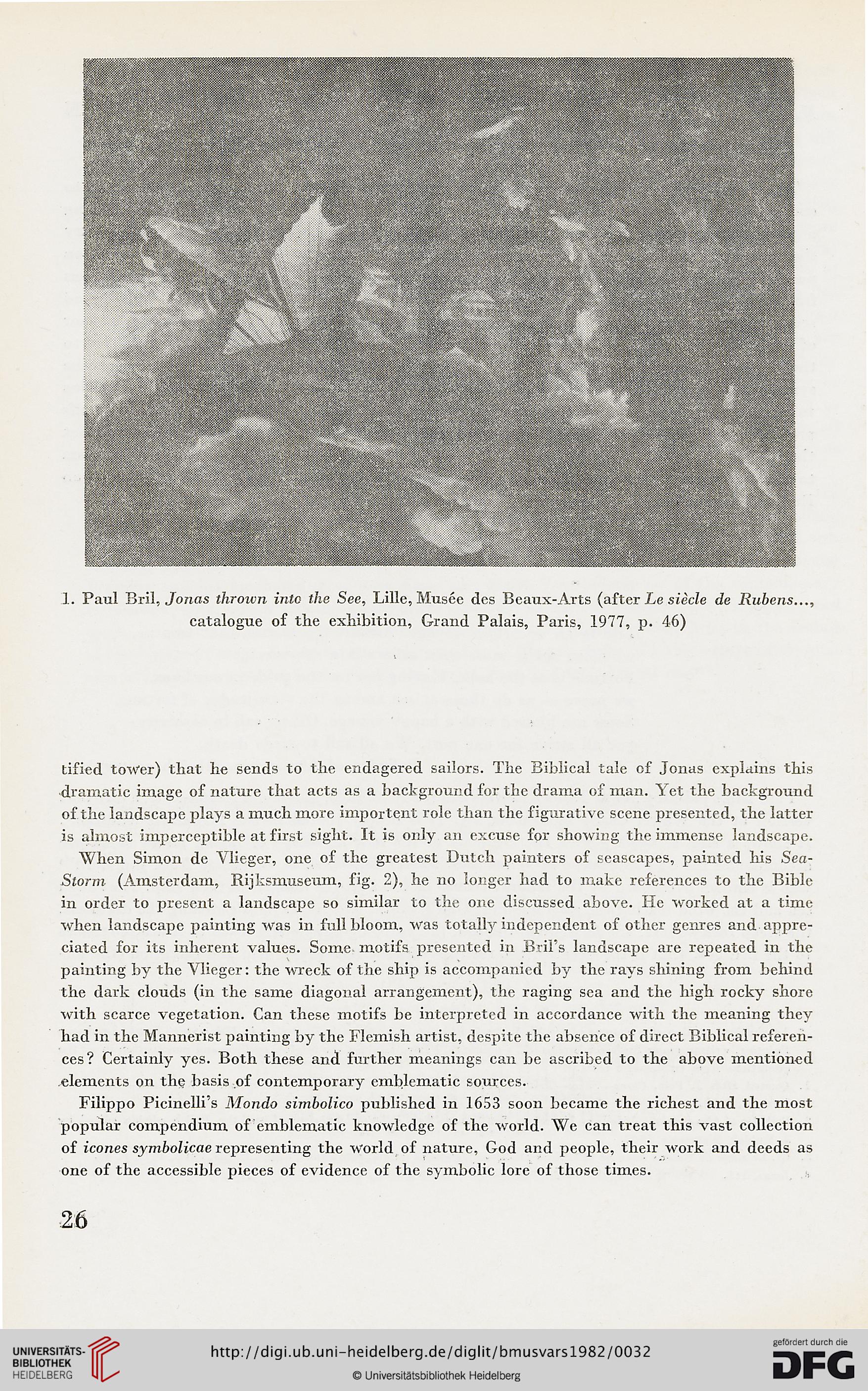1. Paul Bril, Jonas thrown intc the See, Lille, Musee des Beaux-Arts (after Le siecle de Rubens..
catalogue of the exliibition, Grand Palais, Paris, 1977, p. 46)
tified toWer) that he sends to the endagered sailors. The Biblical tale of Jonas explains this
dramatic image of naturę that acts as a background for the drama of man. Yet the background
of the Iandscape plays a much more importent role than the figurative scenę presented, the latter
is almost imperceptible at first sight. It is only an excuse for showing the immense Iandscape.
When Simon de Vlieger, one of the greatest Dutch painters of scascapes, painted his Sea-
Slorm (Amsterdam, Rijksmuseum, fig. 2), he no longer had to make references to the Bibie
in order to present a Iandscape so similar to the one discussed above. He worked at a time
when Iandscape painting was in fuli bloom, Was totally independent of other genres and appre-
ciated for its inherent values. Some. motifs presented in BriFs Iandscape are repeated in the
painting by the Vlieger: the wreck of the ship is accompanied by the rays shining from behind
the dark clouds (in the same diagoiial arrangcment), the raging sea and the high rocky shore
with scarce vegetation. Can these motifs be intcrpreted in accordance with the meaning they
had in the Mannerist painting by the Flemish artist, despite the absence of direct Biblical referen-
ces? Certainly yes. Both these and further meanings can be ascribed to the above mentióned
elements on the basis of contemporary cmblematic sources.
Filippo PicinellFs Mondo simbolico published in 1653 soon became the richcst and the most
popular compendium of emblematic knowledge of the world. We can treat this vast collection
of icones symbolicae representing the World of naturę, God and people, their work and deeds as
one of the accessible pieces of evidence of the symbolic lore of those times.
catalogue of the exliibition, Grand Palais, Paris, 1977, p. 46)
tified toWer) that he sends to the endagered sailors. The Biblical tale of Jonas explains this
dramatic image of naturę that acts as a background for the drama of man. Yet the background
of the Iandscape plays a much more importent role than the figurative scenę presented, the latter
is almost imperceptible at first sight. It is only an excuse for showing the immense Iandscape.
When Simon de Vlieger, one of the greatest Dutch painters of scascapes, painted his Sea-
Slorm (Amsterdam, Rijksmuseum, fig. 2), he no longer had to make references to the Bibie
in order to present a Iandscape so similar to the one discussed above. He worked at a time
when Iandscape painting was in fuli bloom, Was totally independent of other genres and appre-
ciated for its inherent values. Some. motifs presented in BriFs Iandscape are repeated in the
painting by the Vlieger: the wreck of the ship is accompanied by the rays shining from behind
the dark clouds (in the same diagoiial arrangcment), the raging sea and the high rocky shore
with scarce vegetation. Can these motifs be intcrpreted in accordance with the meaning they
had in the Mannerist painting by the Flemish artist, despite the absence of direct Biblical referen-
ces? Certainly yes. Both these and further meanings can be ascribed to the above mentióned
elements on the basis of contemporary cmblematic sources.
Filippo PicinellFs Mondo simbolico published in 1653 soon became the richcst and the most
popular compendium of emblematic knowledge of the world. We can treat this vast collection
of icones symbolicae representing the World of naturę, God and people, their work and deeds as
one of the accessible pieces of evidence of the symbolic lore of those times.




